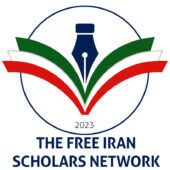By: Prof. Matthew Tasooji, Professor, CSUSM, California.
Though I now live in the United States, my connection to Iran remains deeply personal. Watching from afar as power outages become a daily struggle for so many is both heartbreaking and infuriating. These aren’t just technical issues—they’re the symptoms of a deeper crisis rooted in governance and priorities.
While power outages have long plagued daily life in Iran, the recent intensification—sometimes occurring multiple times a day and lasting for hours—has taken a profound toll on both the livelihoods of ordinary Iranians and the broader economy. Small business owners, unable to operate without a reliable power supply, have been forced to close shop. Storeowners face the loss of refrigerated goods and income. Across the country, frustration is mounting.
This level of crisis is particularly striking given Iran’s resource wealth. Iran ranks second globally in natural gas reserves and third in oil reserves, yet its energy infrastructure is failing its own people. Despite vast fossil fuel reserves, over 90% of Iran’s electricity is generated from oil and gas—yet the country still faces chronic and worsening shortages.
So why, in a nation so rich in energy, are its citizens kept in the dark?
The answer lies in deep-rooted mismanagement, systemic corruption, and the regime’s misplaced priorities. Rather than investing in domestic infrastructure and public welfare, the Iranian government has diverted its resources toward militarism, proxy conflicts, and nuclear ambitions.
In the last year alone, the government reportedly spent $2 billion importing gasoline, and that number is projected to double to $4 billion in the current Iranian year (2024–25). At the same time, it’s estimated that up to 50 million liters of gasoline are being illegally smuggled out of the country each day—a staggering figure that strongly suggests institutional complicity, or at minimum, willful neglect.
Experts estimate Iran needs to add 20–25 gigawatts (GW) of electricity capacity to meet current demand. Building a 10,000-megawatt power plant costs roughly €5 billion, meaning Iran could resolve its electricity shortfall for about €15 billion. Accounting for improvements in fuel transport and infrastructure, the total investment needed to modernize and stabilize Iran’s energy sector is estimated at under €50 billion.
And yet, in stark contrast, the regime has spent close to $1 trillion on its nuclear program—a sum that could have modernized the national energy grid several times over and lifted millions out of poverty. The pursuit of nuclear technology under the guise of energy independence lacks economic rationale when compared to more cost-effective domestic solutions.
This disconnect raises critical questions. If nuclear energy is not the most viable solution to Iran’s energy crisis, why the relentless pursuit? The regime’s insistence on uranium enrichment—even at the cost of crippling sanctions and international isolation—suggests strategic and military motivations rather than civilian energy needs.
When the Trump administration exited the nuclear deal in 2018, citing Iran’s continued provocations, it was already clear that the regime prioritized regional power projection and ideological entrenchment over its people’s well-being.
Today, the Iranian population faces rolling blackouts, water shortages, unemployment, and rising poverty—all while their government diverts billions to foreign conflicts and clandestine projects. The crisis is not one of capacity or resources—it is a crisis of priorities.
Until Iran’s rulers shift their focus from suppression and ambition to transparency and infrastructure, no amount of natural wealth will light the homes or hopes of its people.
Resources


